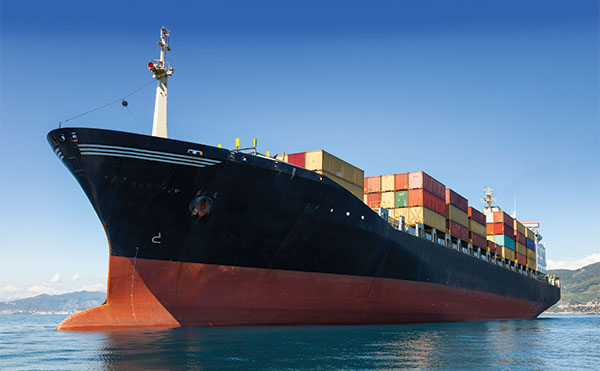Ocean breakbulk upgrade
Peter Moore on Ocean Carrier breakbulk upgrades
-main.jpg) In the early days of shipping, ocean-going cargo was most commonly breakbulk that was loaded by shoreside cranes and dozens of longshoremen. Examples of breakbulk cargo include construction equipment, manufacturing materials, and oversized industrial equipment along the lines of turbine blades, ship propellers, generators, or large engines.
In the early days of shipping, ocean-going cargo was most commonly breakbulk that was loaded by shoreside cranes and dozens of longshoremen. Examples of breakbulk cargo include construction equipment, manufacturing materials, and oversized industrial equipment along the lines of turbine blades, ship propellers, generators, or large engines.
Today, a breakbulk vessel will have cranes for self-loading and discharge at small ports and has holds that can handle bulk commodities or heavy equipment. The term of art today is multi-purpose vessel, or MPV.
Shippers now have options in project-based shipping and commodities—such as containers—as they can build projects in sections and assemble them at their destination, or they can even line containers with plastic and load them with bulk commodities. While the ocean leg might be more expensive by breaking the project into containers, the land portion of the trip to and from ports is often less expense for standard con - tainers versus heavy equipment.
“In recent years, the trend has been to scrap
smaller vessels with lift capacity of less
than 100 tons and build larger vessels with
250-ton cranes and room for bulk product,
containers and heavy equipment.”
General cargo ship owners are responding to keep up with technology and trends in international “project” markets. Large industrial and government infrastructure projects are increasingly sourcing worldwide from large airplane parts to sections of turbines and port cranes. In the meantime, the project markets need more vessels capable of lifting and transporting massive objects.
With over 3,000 multi-purpose vessels plying the oceans, it would seem that shippers would have plenty of options. However, a closer look reveals changes consistent with trends in other transport modes. For example, the bigger carriers are building larger vessels as they attempt to capture more freight to pay for their upkeep and operation.
In recent years, the trend has been to scrap small - er vessels with lift capacity of less than 100 tons and build larger vessels with 250-ton cranes and room for bulk product, containers and heavy equipment. The idea is to provide one-stop shopping and oper - ate in irregular routes, providing shippers with more flexibility and access to smaller ports, often without landside container cranes, but much closer to impor - tant destinations.
The market for breakbulk or MPV services tracks the general economy and appears to closely follow capital spending trends in private industry and inter - governmental foreign aid by developed countries.
The current trends are good, and pricing is firm. Growth in booking has been between 1% and 2% for several years as smaller vessel usage has been declining. And unlike the container carriers, the MPV owners have moved slowly and haven’t seriously overbuilt. However, the direction is clear: shippers should expect fewer operator choices as the market consolidates to larger vessels.
The upgrade in breakbulk goes beyond new ves - sels. Like the owners in rail, highway, air and pipe - line, the ship owners are leveraging technology and the power of global web-based marketing to identify those that will need their services and are targeting them to lock up freight bookings—even before prod - ucts are produced and project managers are ready to ship the merchandise.
Early booking helps operators optimize their routes and equipment use, while incentives for early booking help shippers moderate their budgets and minimize cost spikes late in the project cycle when it is time to deliver.
As with other transportation markets, shippers need to keep a sharp eye out for the trend toward less competition, but they also need to think cre - atively. Long-term chartering is a hedge against market volatility, and new collaborative contracting techniques are having an impact in other modes. So, why not in breakbulk? Maybe the best upgrade is a new chartering process.

Article Topics
Ocean Freight News & Resources
Descartes March Global Shipping Report highlights ongoing steady volume momentum U.S.-bound import growth track remains promising, notes Port Tracker report Nimble shippers coping with Baltimore port closing by shifting plans Q&A: Port of Oakland Maritime Director Bryan Brandes Signs of progress are being made towards moving cargo in and out of Baltimore Industry experts weigh in on Baltimore bridge collapse and subsequent supply chain implications Expensive, lengthy delays expected before Port of Baltimore can re-open to vessels following Key Bridge collapse More Ocean FreightLatest in Logistics
Shipment and expenditure decreases trend down, notes Cass Freight Index March trucking tonnage trends down, reports ATA FTR Shippers Conditions Index enters negative territory DAT March Truckload Volume Index sees modest March gains National diesel average, for week of April 22, is down for the second straight week UPS reports first quarter earnings decline LM Podcast Series: Assessing the freight transportation and logistics markets with Tom Nightingale, AFS Logistics More LogisticsSubscribe to Logistics Management Magazine

Find out what the world's most innovative companies are doing to improve productivity in their plants and distribution centers.
Start your FREE subscription today.
April 2023 Logistics Management

Latest Resources
















